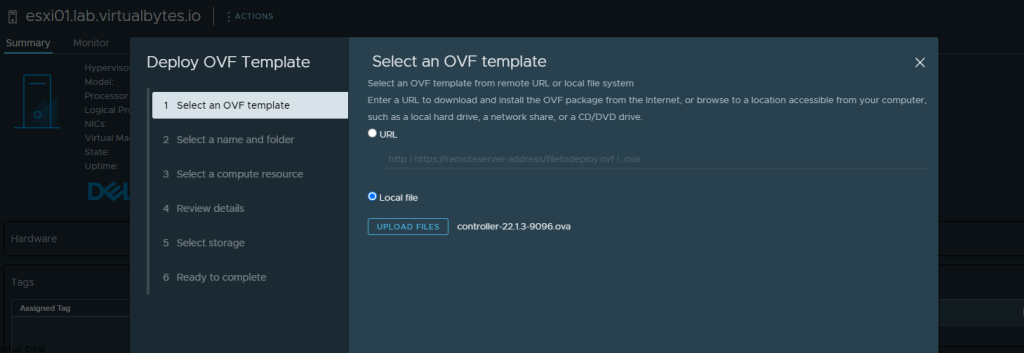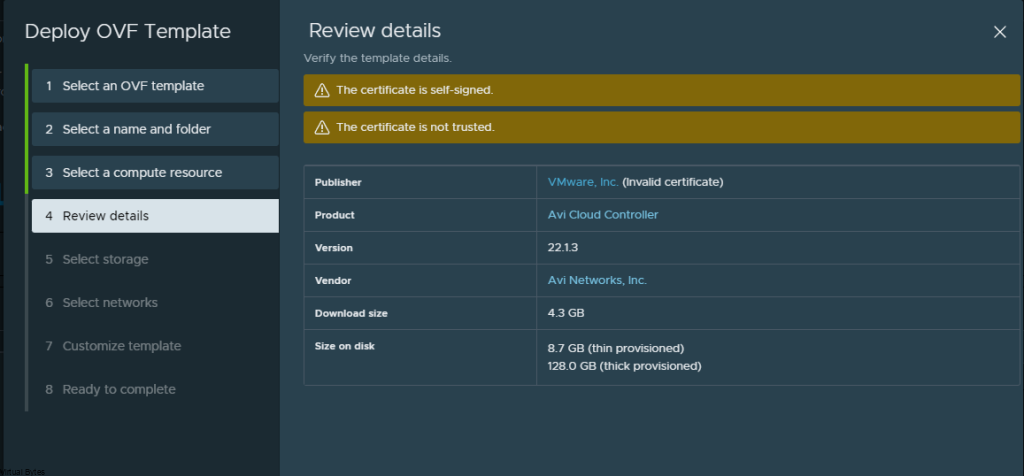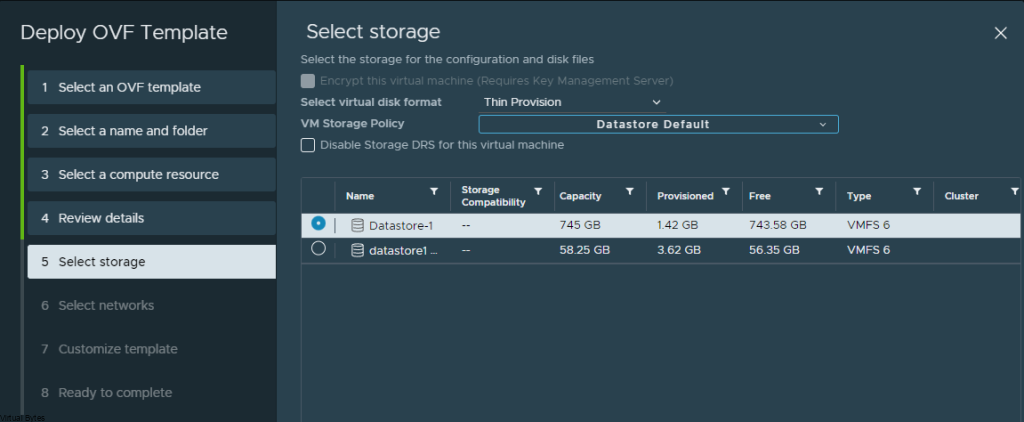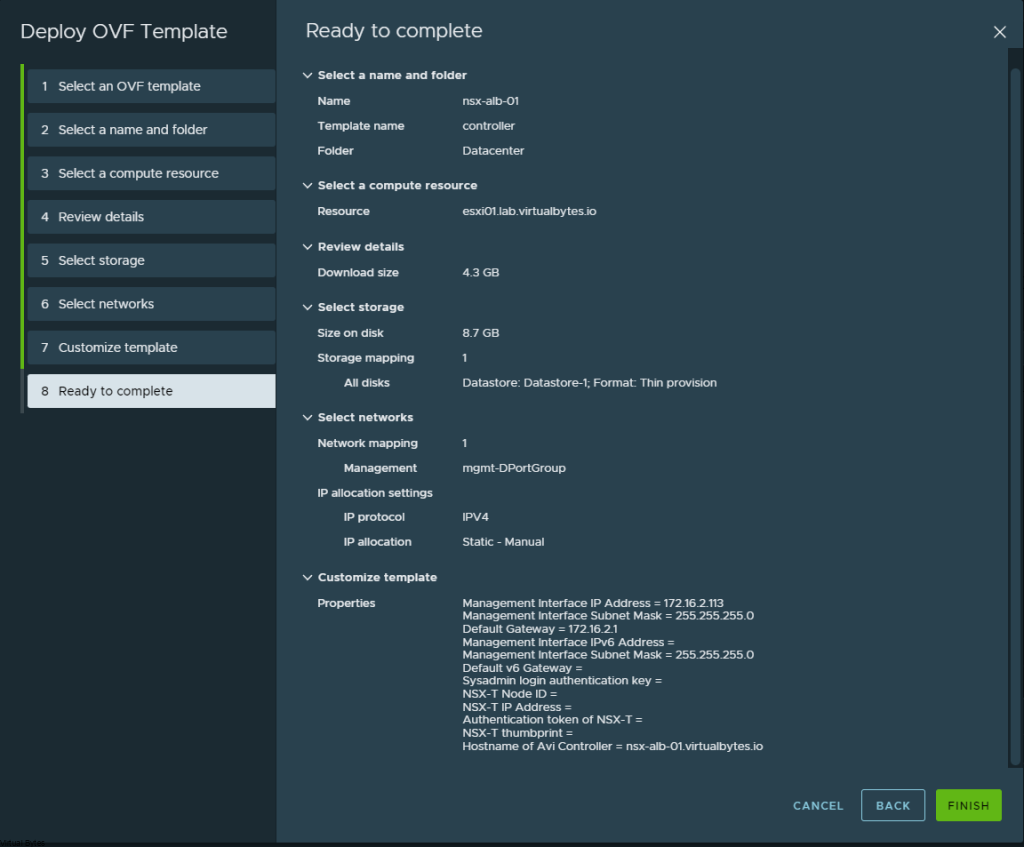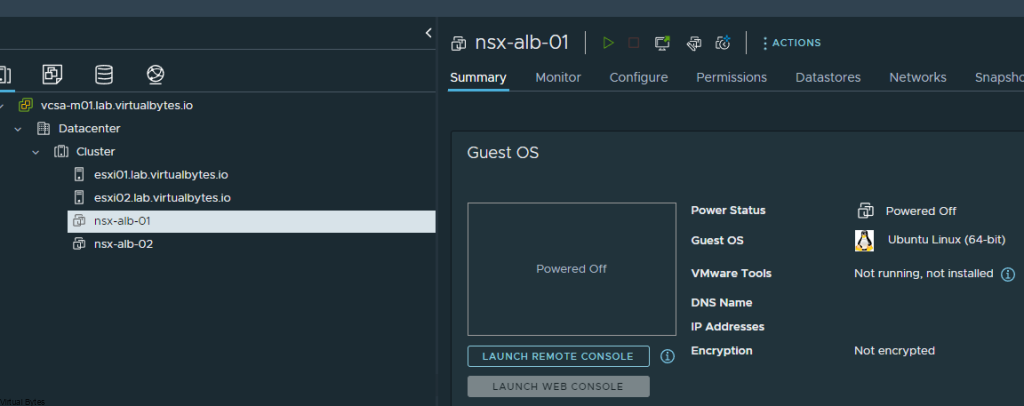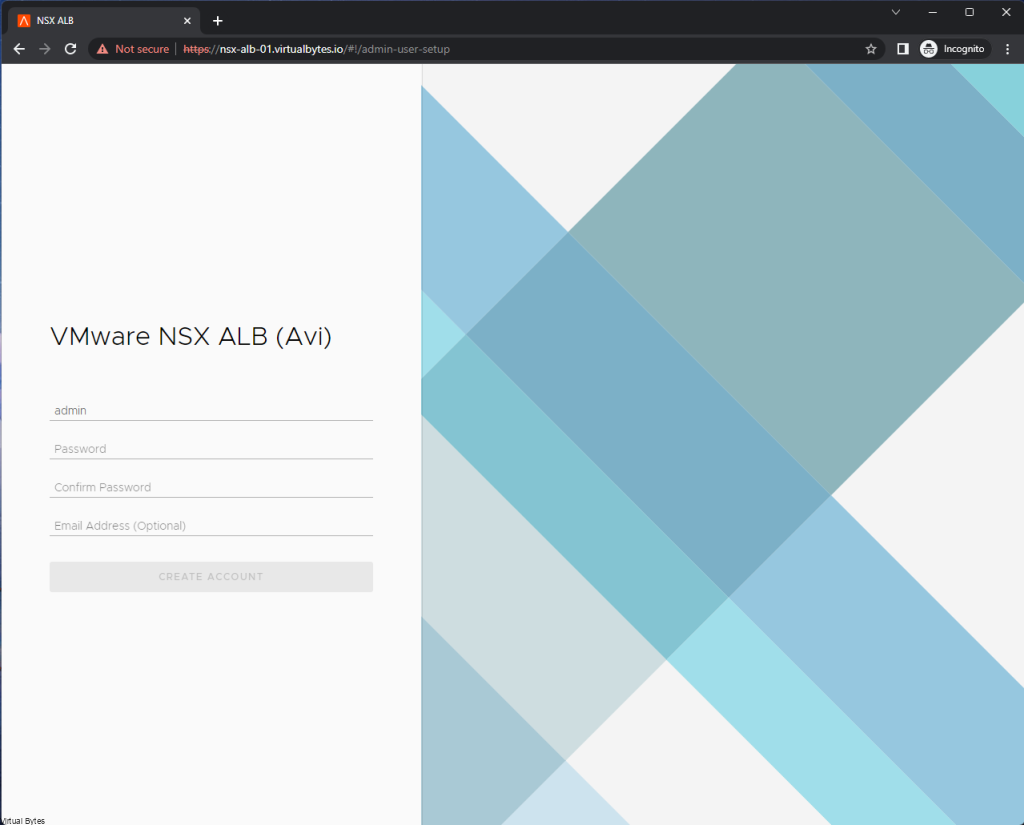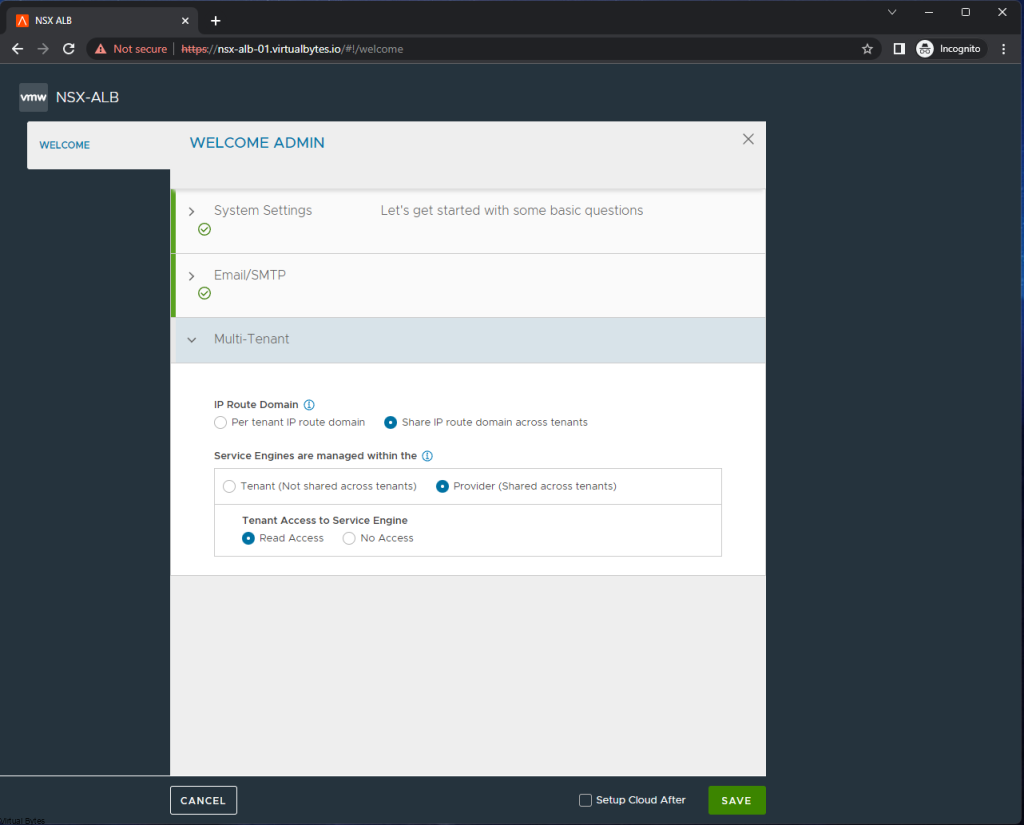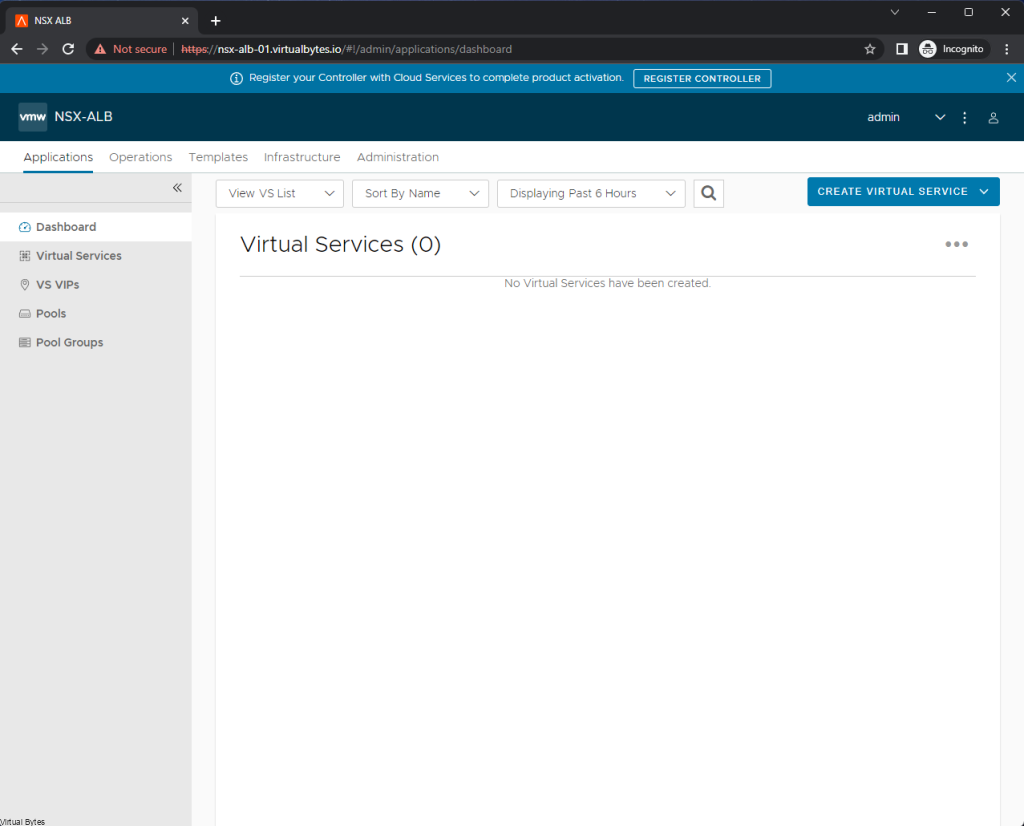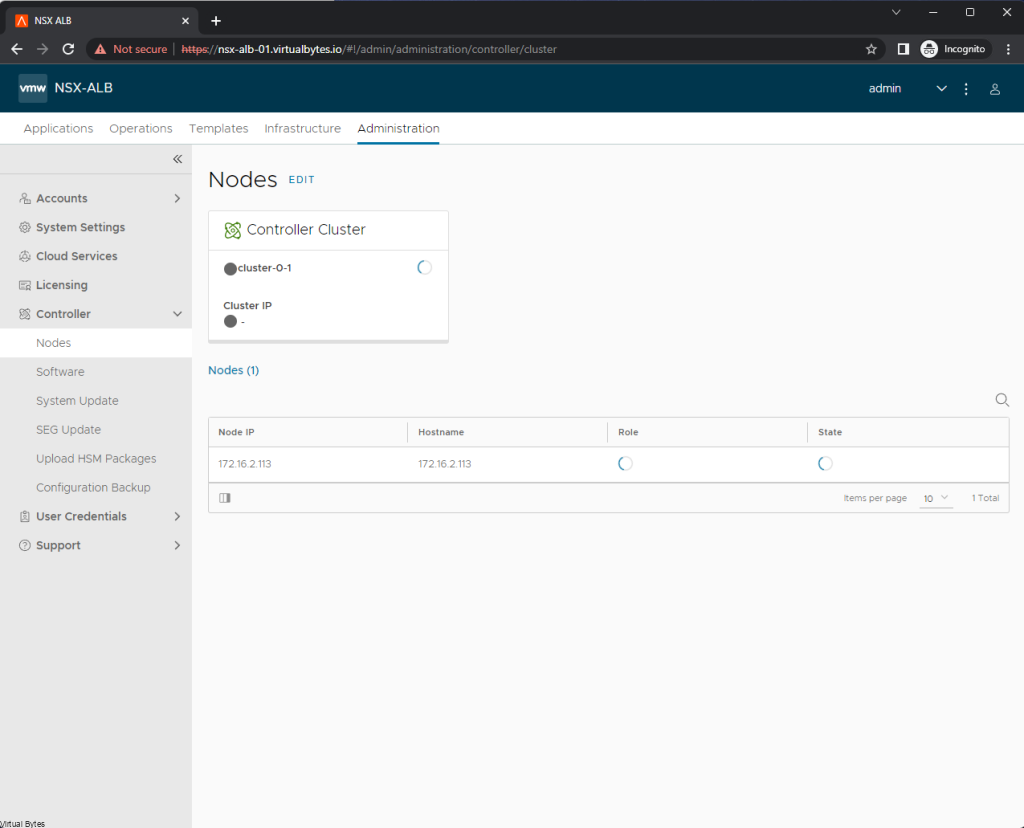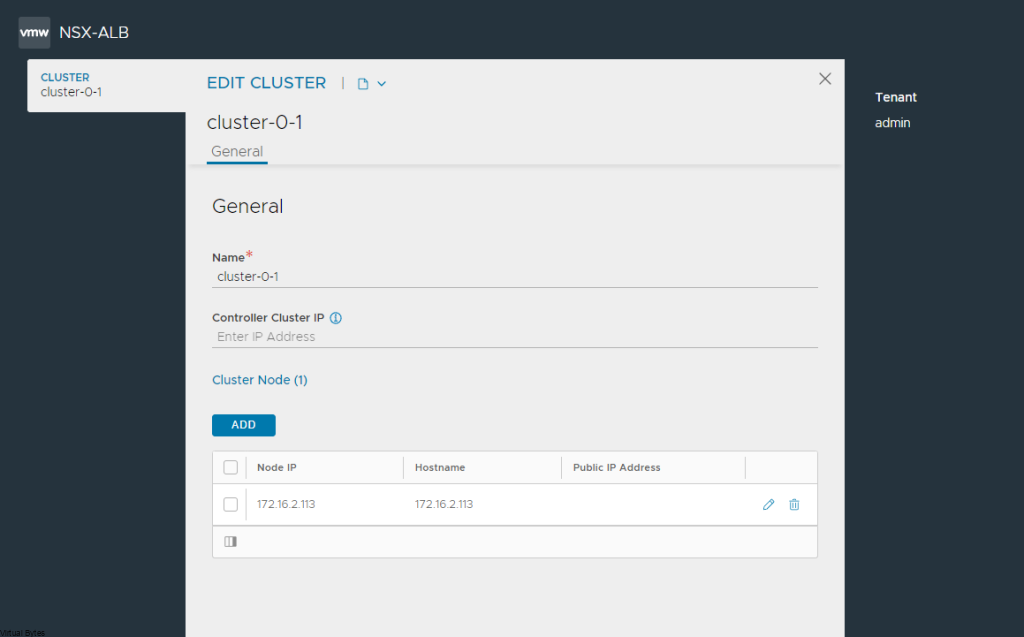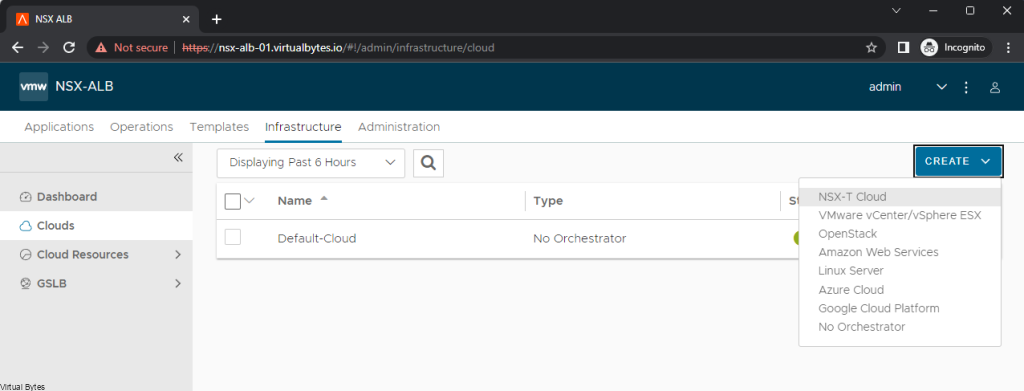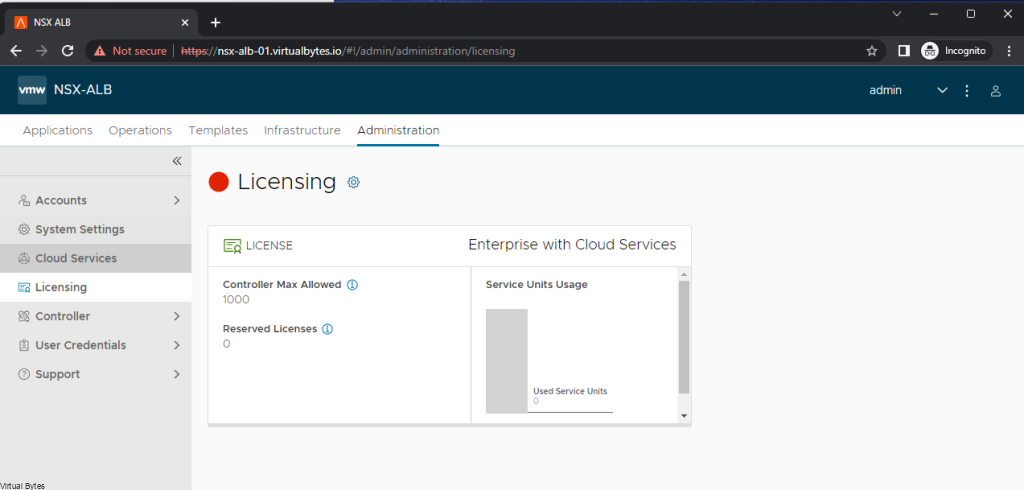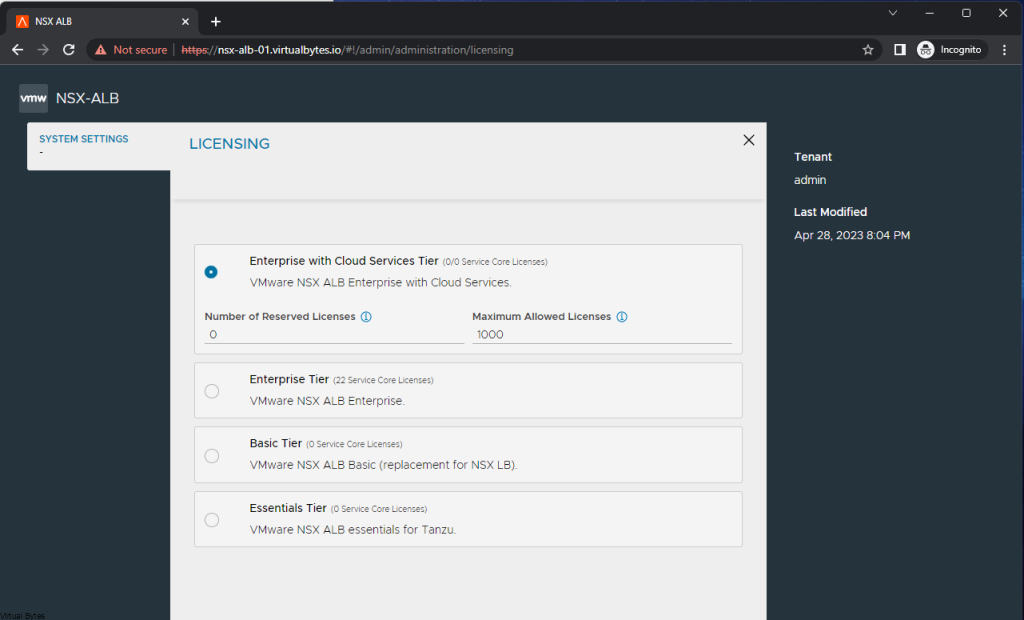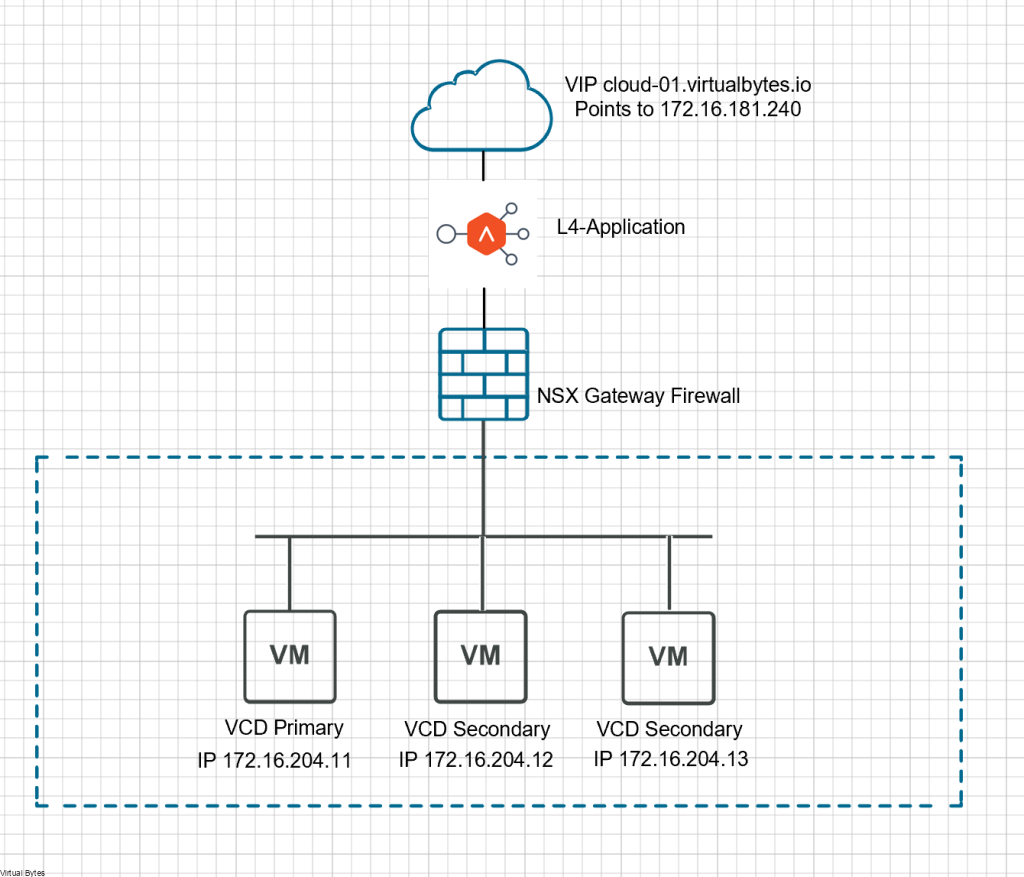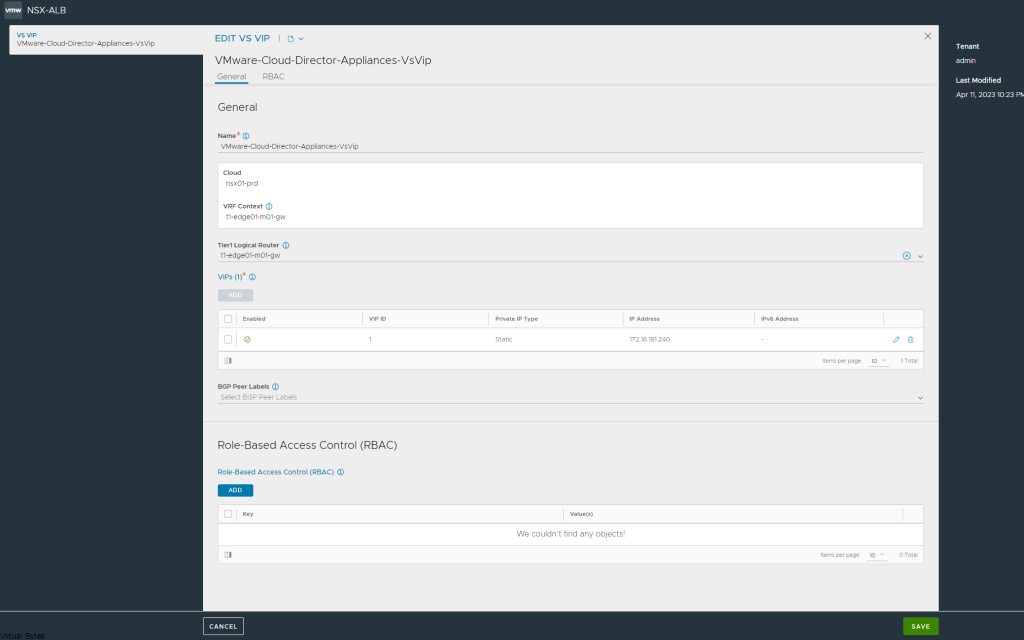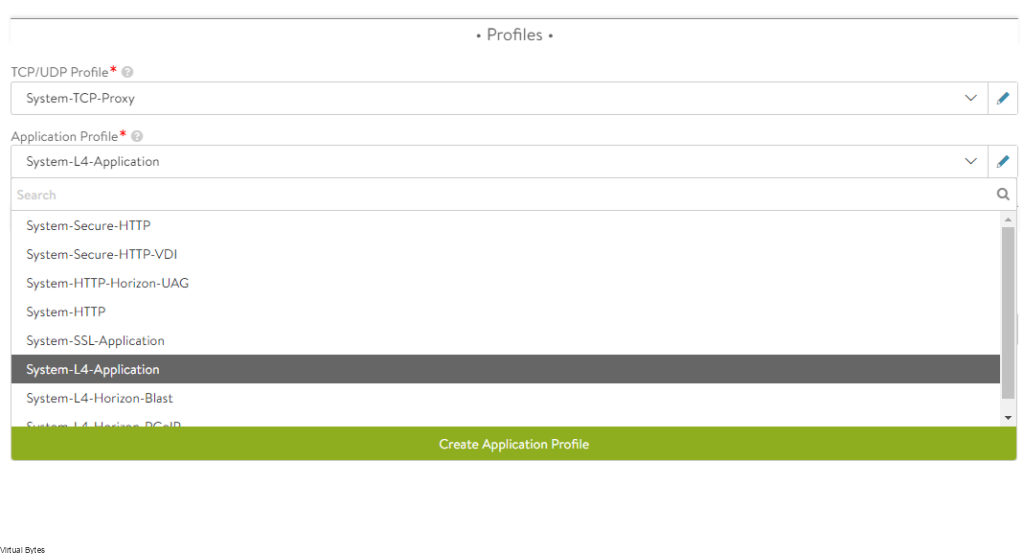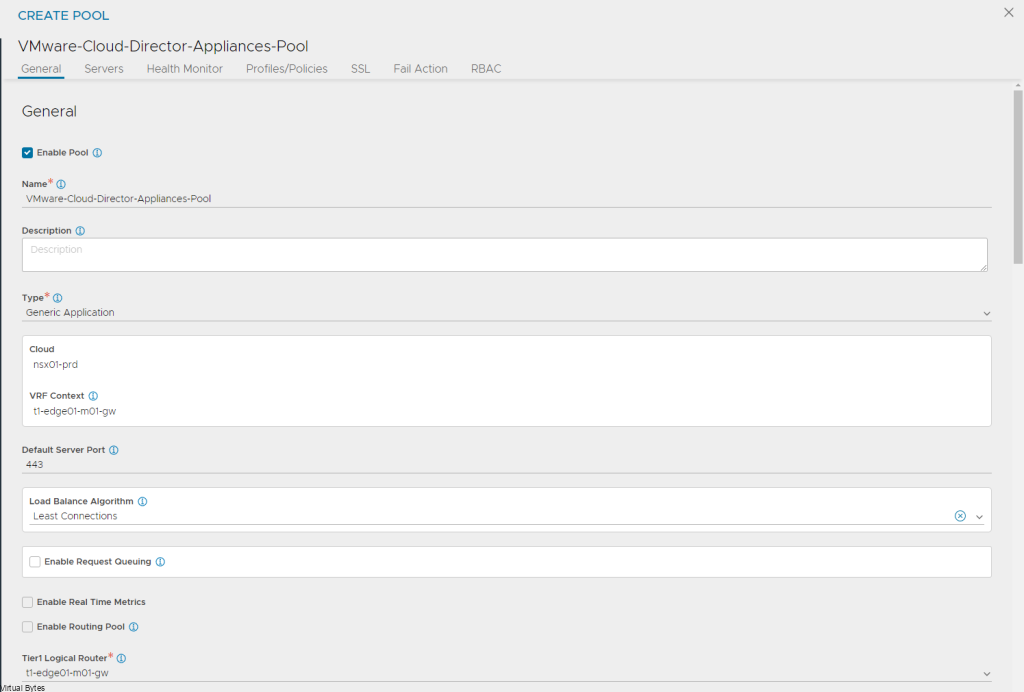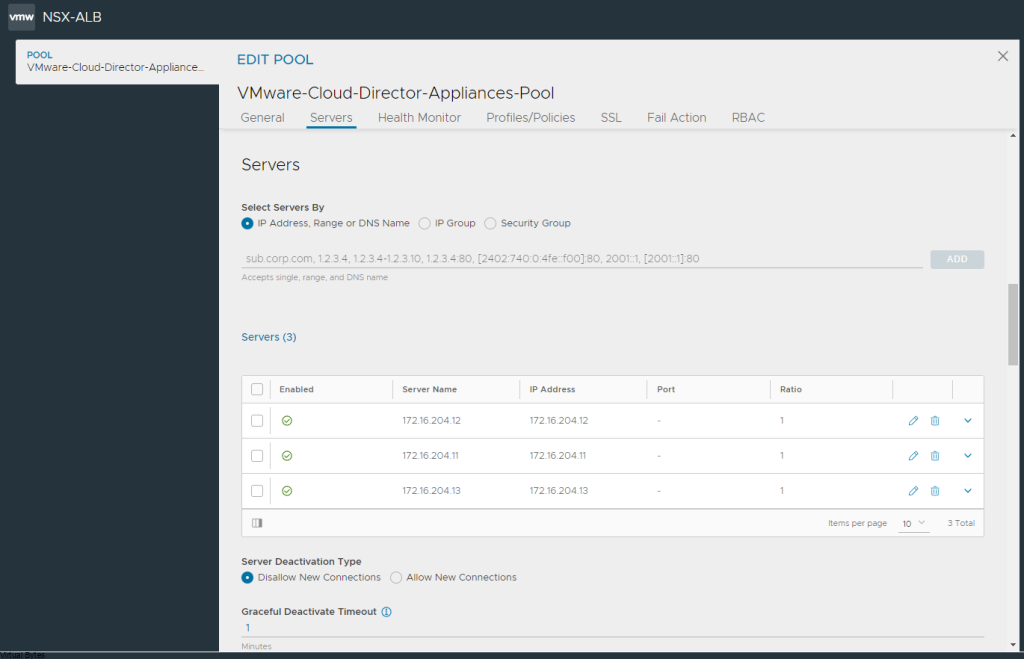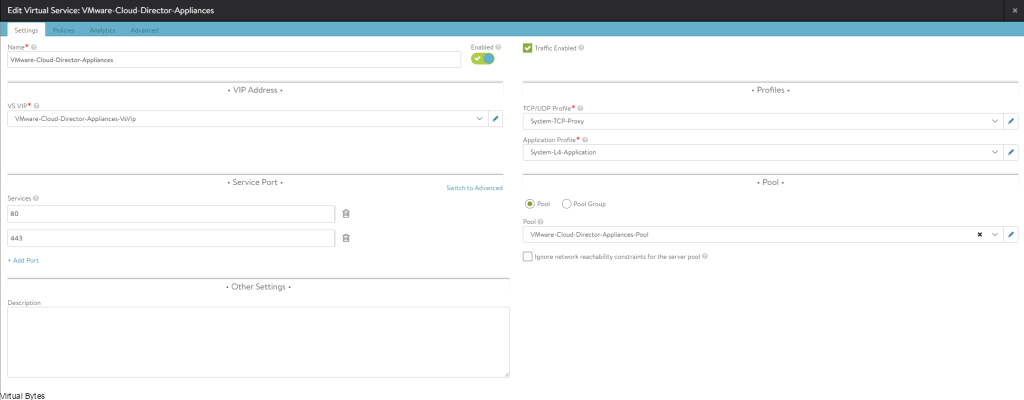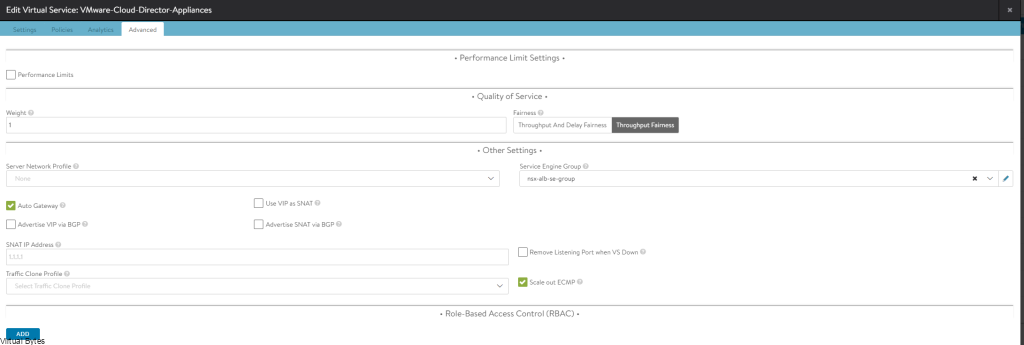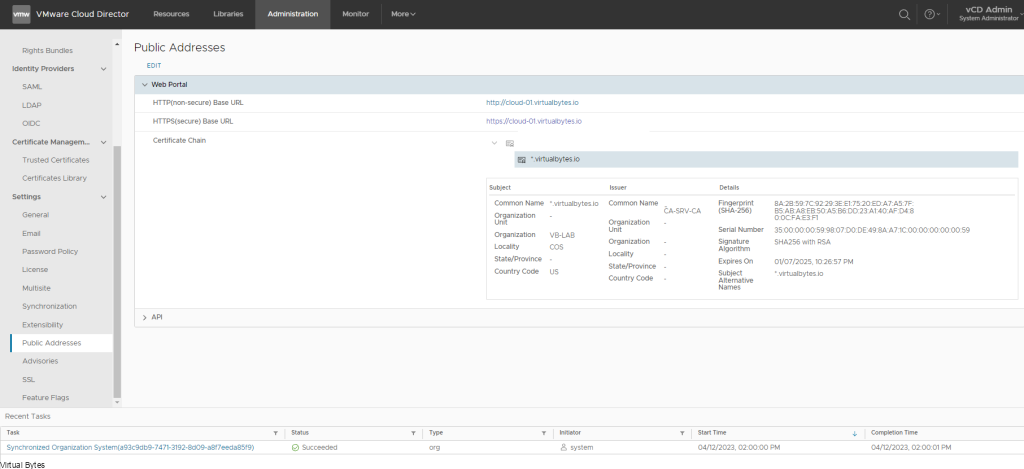Official Announcement about the new offerings from VMware
VMware is here to shake things up with their latest offerings, VMware Cloud Foundation and VMware vSphere Foundation!
With VMware Cloud Foundation, managing your cloud infrastructure has never been easier, providing a unified platform for seamless deployment and management of applications across private, public, and hybrid clouds. And that’s not all! VMware vSphere Foundation takes virtualization to the next level for smaller businesses and their needs, delivering enhanced scalability, reliability, and security for your business-critical applications.
Announcement of VMware Cloud Foundation and vSphere Foundation Products and Support Services offerings, same information where @ William Lam has shared on his blog.
VMware Cloud Foundation (VCF)
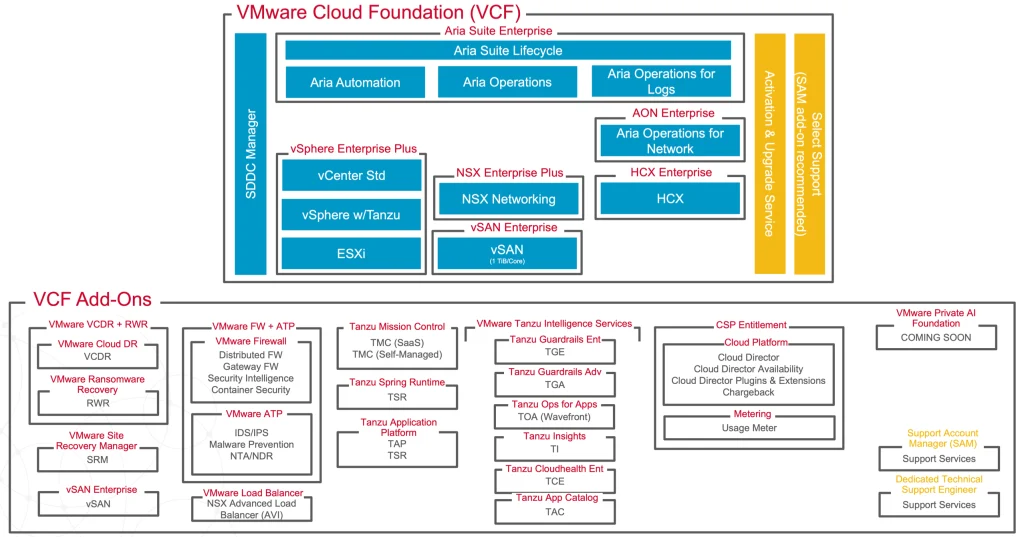
Products & Support Services includes:
- SDDC Manager
- vSphere Enterprise Plus
- vCenter Server Standard
- vSphere with Tanzu (includes TKG Runtime)
- vSphere ESXi
- vSAN Enterprise (includes 1TiB per CPU Core)
- NSX Enterprise Plus
- Aria Suite Enterprise
- Aria Automation
- Aria Operations
- Aria Operations for Logs
- Aria Operations for Networks Enterprise
- HCX Enterprise
- VMware Data Service Manager (COMING SOON)
- Activation & Upgrade Support Service
- Select Support Service (recommended)
Available Add-Ons for purchase for VCF:
- VMware Cloud Disaster Recovery (VCDR)
- Sold as protected TiB and Per Protected VM
- VMware Ransomware Recovery (RWR)
- Sold as Per Protected VM
- VMware Site Recovery (SRM)
- Sold as pack of 25 VMs
- vSAN Enterprise
- Sold as 8TiB per CPU socket
- VMware Load Balancer (NSX Advanced Load Balancer)
- Sold as per service unit
- VMware Firewall
- Sold as per CPU Core
- Distributed Firewall
- Gateway Firewall
- Security Intelligence
- Container Security with Antrea
- VMware Firewall + Advanced Threat Protection (ATP)
- Sold as per CPU Core
- Distributed Firewall
- Gateway Firewall
- Security Intelligence
- Container Security with Antrea
- Distributed and Gateway Intrusion Detection and Prevention Service (IDS/IPS)
- Malware Prevention
- Network Traffic Analysis (NTA) and Network Detection and Response (NDR)
- Tanzu Mission Control (TMC)
- Sold as per CPU Core
- TMC SaaS
- TMC (Self-Managed)
- Tanzu Application Platform (TAP)
- TAP
- Sold as per vCPU
- Tanzu Spring Runtime
- Sold as per CPU Core
- TAP
- Tanzu Spring Runtime (TSR)
- Sold as per CPU Core
- Tanzu Guardrails Enterprise (TGE)
- Sold as per resource
- Tanzu Hub
- Tanzu Guardrails
- Aria Automation Config (formally Saltstack)
- Automation for Secure Clouds
- Automation for Secure Host
- Tanzu Guardrails Advanced (TGA)
- Sold as per resource
- Tanzu Hub
- Tanzu Guardrails
- Automation for Secure Clouds
- Tanzu Cloudhealth Enterprise (TCE)
- Sold as percentage of monthly cloud spend
- Tanzu Application Catalog (TAC)
- Sold as active artifact
- Tanzu Ops for Apps (formally Wavefront)
- Sold as packets per second (PPS)
- Tanzu Insights (TI)
- Sold as event per month
- CSP Entitlement
- Partner must be signed up to Broadcom Expert Advantage program
- Cloud Director
- Cloud Director Availability
- Cloud Director Plugins and Extension
- Chargeback
- Usage Meter
- VMware Private AI Foundation (COMING SOON)
- Support Account Manager (SAM) Support Services
- Dedicated Technical Support Engineer (DTSE) Support Services
VMware vSphere Foundation (VVF)
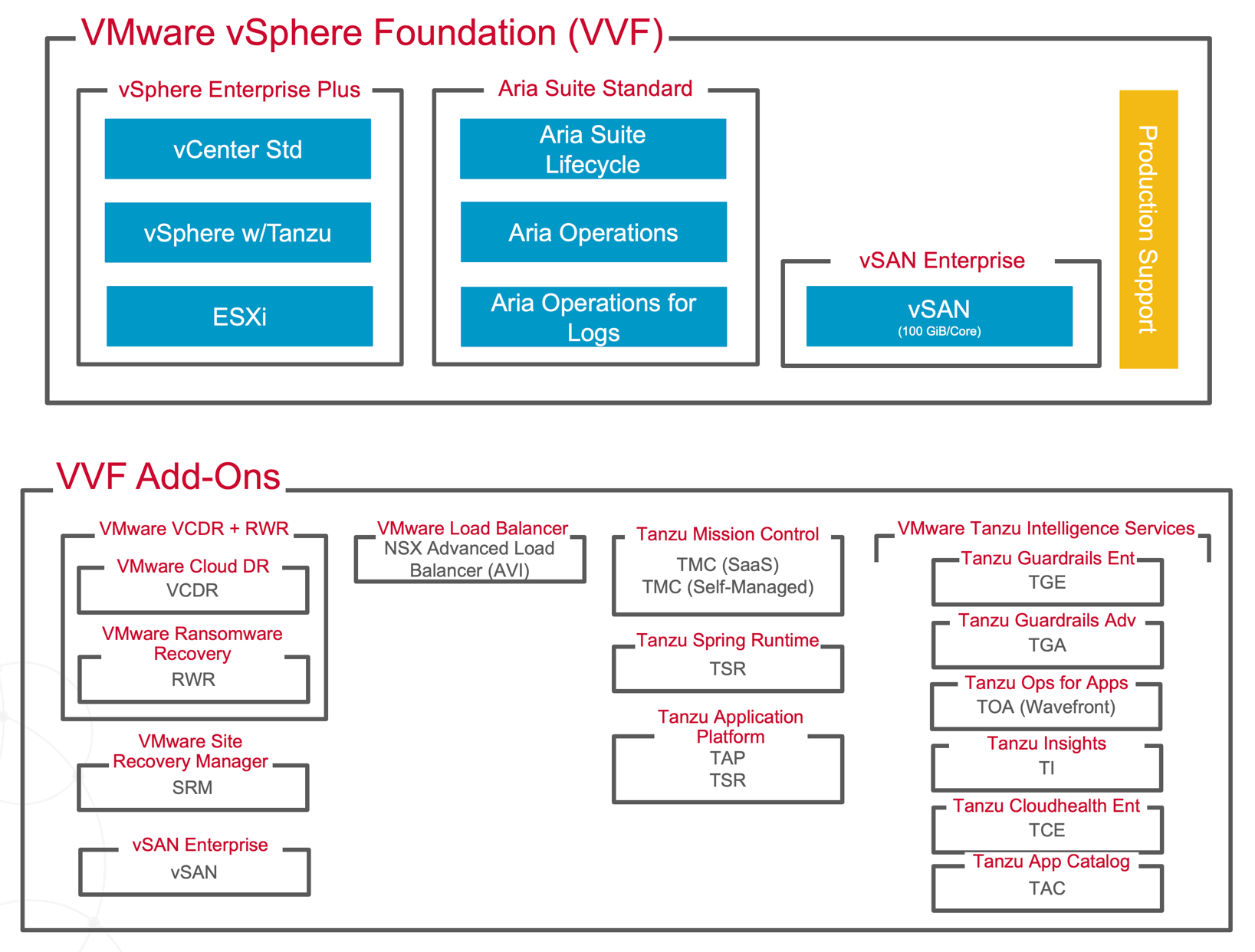
Products & Support Services includes:
- vSphere Enterprise Plus
- vCenter Server Standard
- vSphere with Tanzu (includes TKG Runtime)
- vSphere ESXi
- vSAN Enterprise (*includes 100GiB per CPU Core per host)
- Aria Suite Standard
- Aria Suite Lifecycle
- Aria Operations
- Aria Operations for Logs
- Production Support Service
Available Add-Ons for purchase for VVF:
- VMware Cloud Disaster Recovery (VCDR)
- Sold as protected TiB and Per Protected VM
- VMware Ransomware Recovery (RWR)
- Sold as Per Protected VM
- VMware Site Recovery (SRM)
- Sold as pack of 25 VMs
- vSAN Enterprise
- Sold as 8TiB per CPU socket
- VMware Load Balancer (NSX Advanced Load Balancer)
- Sold as per service unit
- Tanzu Mission Control (TMC)
- Sold as per CPU Core
- TMC SaaS
- TMC (Self-Managed)
- Tanzu Application Platform (TAP)
- TAP
- Sold as per vCPU
- Tanzu Spring Runtime
- Sold as per CPU Core
- TAP
- Tanzu Spring Runtime (TSR)
- Sold as per CPU Core
- Tanzu Guardrails Enterprise (TGE)
- Sold as per resource
- Tanzu Hub
- Tanzu Guardrails
- Aria Automation Config (formally Saltstack)
- Automation for Secure Clouds
- Automation for Secure Host
- Tanzu Guardrails Advanced (TGA)
- Sold as per resource
- Tanzu Hub
- Tanzu Guardrails
- Automation for Secure Clouds
- Tanzu Cloudhealth Enterprise (TCE)
- Sold as percentage of monthly cloud spend
- Tanzu Application Catalog (TAC)
- Sold as active artifact
- Tanzu Ops for Apps (formally Wavefront)
- Sold as packets per second (PPS)
- Tanzu Insights (TI)
- Sold as event per month
- Note: The included 100GiB of vSAN Storage per CPU core will be available in a future vSphere patch update.
Also additional offers for customers:
- VMware vSphere Standard (VVS)
- VMware vSphere Essentials Plus Kit (VVEP)
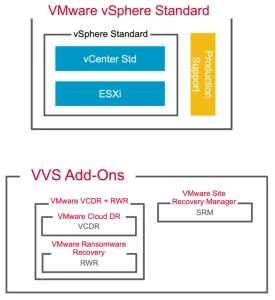
Products & Support Services includes:
- vSphere Standard
- vCenter Server Standard
- vSphere ESXi
- Production Support Service
Available Add-Ons for purchase for VSS:
- VMware Cloud Disaster Recovery (VCDR)
- Sold as protected TiB and Per Protected VM
- VMware Ransomware Recovery (RWR)
- Sold as Per Protected VM
- VMware Site Recovery (SRM)
- Sold as pack of 25 VMs
VMware vSphere Essentials Plus Kit (VVEP)
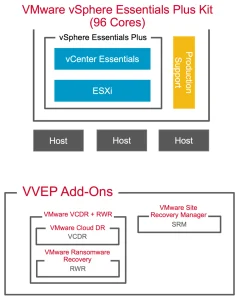
Products & Support Services includes:
- vSphere Essentials Plus (Maximum of 3 host w/up to 96 Cores)
- vCenter Server Essentials
- vSphere ESXi
- Production Support Service
Available Add-Ons for purchase for VVEP:
- VMware Cloud Disaster Recovery (VCDR)
- Sold as protected TiB and Per Protected VM
- VMware Ransomware Recovery (RWR)
- Sold as Per Protected VM
- VMware Site Recovery (SRM)
- Sold as pack of 25 VMs
VMware Validated Solutions (VVS) for VCF
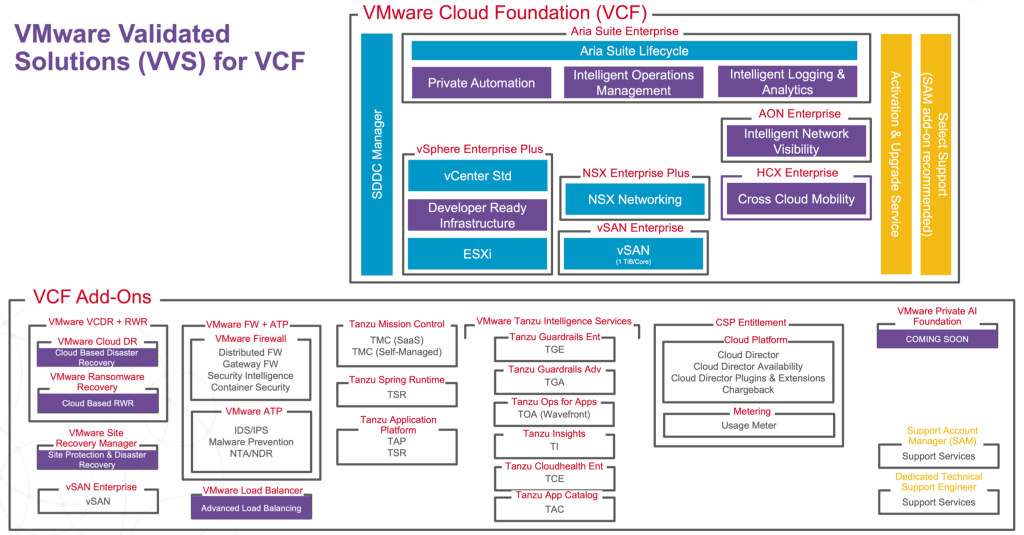
Available VVS for VCF:
- Private Cloud Automation for VCF
- Intelligent Operations Management for VCF
- Intelligent Logging and Analytics for VCF
- Cloud-Based Network Visibility for VCF
- Developer Ready Infrastructure for VCF
- Cross Cloud Mobility for VCF
- Cloud-Based Workload Protection for VCF
- Cloud-Based Ransomware Recovery for VCF
- Site Protection and Disaster Recovery for VCF
- Advanced Load Balancing for VCF







